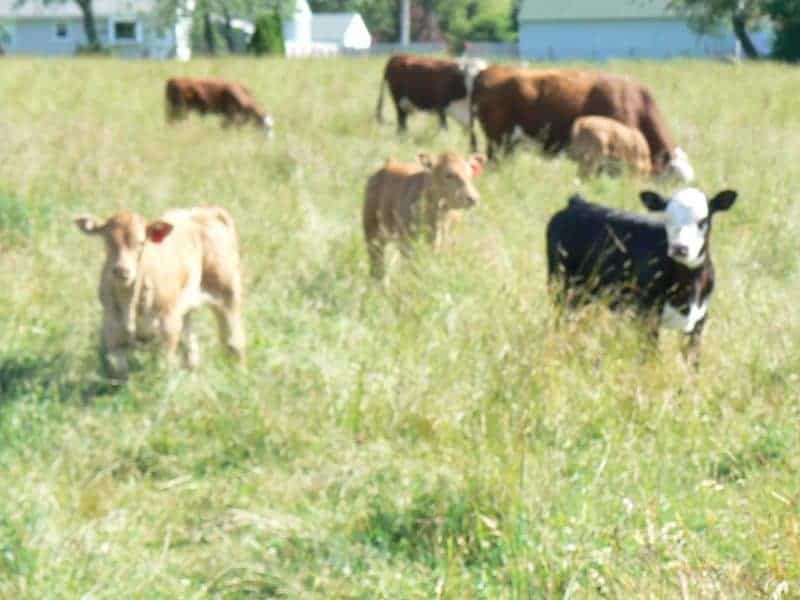“Look at that Ass…Now That’s a Good Looking Cow!”

“Look at that ass! And those big hind legs!” We were out in the middle of a grassy cowfield, pockmarked with cowpies, and farm manager Jeff Farrell was eying the merchandise, thinking of what would end up on some lucky Rhode Islander’s plates.
We were getting a close-up view of his 66 hybrid Hereford/Angus cows and steers, and we met the big Kahuna himself, the lucky stud Angus bull who Farrell regards with special affection. He nuzzled the big bull, who reciprocated, he knows the guy who brings him his girlfriends.
At the Sunset Farm, in Point Judith, the land, all 180 acres of woods and pasture, is owned by the town. Farrell manages the farm and when he receives his flash-frozen packages of steaks, ribs and chops, it takes mere hours for them to be sold out. That’s because it’s grass-fed beef, and the steers live for 24-26 months, versus about 14-15 months for conventional beef. If you’ve ever tasted grass-fed beef, you know what I mean! After the steaks, all he has for most customers are hamburger and the odd flank steak. There’s quite a movement here, with Rhody Fresh Beef, a group of 100 farmers who raise all manner of animals for local consumption in this tiny state.
The Sunset Farm is just down the road from the Port of Gallilee, where ferry boats depart for Block Island, and commercial fishermen sell their wares to restaurants along with walk-in customers. There are hiking trails that take you all the way down to the ocean, and during some weekends hundreds come here to buy this delicious beef plus Rhode Island grown vegetables, fruits, bacon, eggs and other products.

“You don’t make much money in farming,” Jeff told me. Yet I could tell as we sat in the sun admiring the herd, that this job was exactly what he wants to be doing. Later we met his wife Sue, and his son, both of whom help out with the many chores a big farm requires.
Their work goes on seven days a week. “All the money is in the ass and the legs,” he explained, showing how certain breeds carry that butt weight better and how when the cows get old, the tummies expand and the butt is too small.
“When you see one with a great looking shape, well that’s the one you breed.”
